The third-generation jeweler is remembered as a passionate creative with a love of art, traveling and sailboat racing.
Squirrel Spotting: Body Language Speaks Volumes
A great deal of time is spent coaching the correct language for sales. But even more important, Peter Smith says, is what your body language is saying.

A great deal of time and energy is spent by managers and trainers coaching the correct language to use in sales environments. We understand the power of words, and we must frequently battle the need to say just the right thing without it coming across as staged or contrived.
Some of the efforts are trite, outdated and wholly ineffective. “How can I help you?” ought to be unceremoniously retired because it all too often serves to invite the equally useless and generally automatic, “I’m just looking.”
Other greetings, such as DSW’s laughable, “May I help the next shoe-lover?” are borderline ridiculous, coming, no doubt, from a well-intentioned, but misguided, corporate head who likely never worked a day of his or her life behind a retail counter.
What we hear less of is the impact that good (or bad) body language can have on our customer interactions.
Connie Dieken wrote in “Talk Less, Say More” that, “Vision is the most dominant human sense. Your brain processes visuals up to 10 times faster than mere words, according to research in both educational theory and cognitive psychology.”
If Dieken is correct and we do, in fact, process visuals 10 times faster than words, it would seem to suggest that how we approach/engage customers and how we carry ourselves, physically, matters a good deal more than the words we use. And, as it happens, those non-verbal communications happen immediately and carry through the entirety of the customer interaction.
So, what are the most important elements of body language of which we ought to be aware?
In the first instance, we should know that “emotional contagion” is a term that psychologists like to use. What it really means is that whatever emotional state you bring in to an interaction will be contagious. If you approach your customers with good energy and a positive attitude, you will likely receive that positive energy in return.
On the other hand, a negative attitude and demeanor is likely to receive the same in response from your customer; a certain recipe for emotional disconnect. So, start with a positive attitude and good energy.
Alexander Todorov, Princeton University, wrote an important white paper that indicated that we make a decision about whether we like someone or not in one-tenth of a second. That kind of immediate non-verbal communication demands that our body language--typically observed before any words are ever spoken--is extremely important.
Smile
There is no better way to communicate non-verbally than to wear a smile on your face. Gretchen Rubin wrote in “The Happiness Project” that: “Studies show that you tend to like people whom you think like you; and the amount of time you smile during a conversation has a direct effect on how friendly you’re perceived to be.”
Touch
Leonard Mlodinow wrote in “Subliminal, How Your Unconscious Mind Rules Your Behavior” that: “Scientists have discovered a particular kind of nerve fiber in the people’s skin--especially in the face and arms--that appears to have developed specifically to transmit the pleasantness of social touch.”
The easiest way to physically connect with someone when you meet them is to extend your hand and introduce yourself. Sincerely touching their elbow or arm, as the conversation progresses, is another way to create a meaningful physical connection.
Look Into Their Eyes
Sanjida O’Connell wrote in “Mindreading, An Investigation into How We Learn to Love and Lie” that: “When someone stares directly into your eyes, your heart rate increases, as does the electrical activity in your brain.”
So, go ahead, make purposeful eye contact and use that electricity to light a spark.
Use Hand Gestures
Joe Navarro wrote in “What Every Body Is Saying” that: “Effective communicators use their hands as part of their speech.”
Pull up a few TED Talks and watch the top speakers communicate. They seem almost unable to speak without using their hands, and their communication is all the more effective for it.
Mirror the Customer’s Tone of Voice
Rosabeth Moss Kanter wrote in “Confidence” that: “The synchronizing of a sad or happy tone of voice, for example, is often unconscious, as though the human brain is hard-wired to get in tune with other people, because it is more pleasant to have a sense of rapport. Being out of tune is jarring and makes people feel isolated.”
Be Expansive and Open
In “Presence,” Amy Cuddy wrote, “When our body language is confident and open, other people respond in kind, unconsciously reinforcing not only their perceptions of us but also our perception of others.”
Encountering people who are closed to us, slightly turned (disconnected) or with folded arms (guarded) makes it very difficult to establish a rapport.
Active Listening
In “The Rare Find,” George Anders wrote, “Aggressive listeners gain authority by being incredibly attentive to other people. These experts catch the gestures, pauses and inflections that hint at something beyond the words being said at the time.”
There is, of course, a difference between listening and active listening. Active listening is, absent the verbals, a participatory activity. It requires much more than simply being quiet while the other person speaks. The listener should lean-in, nod in affirmation, maintain eye contact and generally mirror the facial expressions of the person speaking.
Being aware of our non-verbal communication is crucial to establishing and maintaining an emotional connection with our customers and our co-workers.
It has often been said that when the words being spoken are at odds with the body language, always believe the body language. It’s that important.
Peter Smith is president of Vibhor, a public speaker and author of “Sell Something” and “Hiring Squirrels.” He spent 30 years building sales teams in retail and wholesale and he can be contacted at dublinsmith@yahoo.com, peter@vibhorgems.com, or on LinkedIn, Facebook or Twitter.
The Latest

JSA and Cook County Crime Stoppers are both offering rewards for information leading to the arrest of the suspect or suspects involved.

A buyer paid $25.6 million for the diamond at Christie’s on Tuesday. In 2014, Sotheby’s sold the same stone for $32.6 million.

Roseco’s 704-page catalog showcases new lab-grown diamonds, findings, tools & more—available in print or interactive digital editions.

Mercedes Gleitze famously wore the watch in her 1927 swim across the English Channel, a pivotal credibility moment for the watchmaker.


GIA is offering next-day services for natural, colorless diamonds submitted to its labs in New York and Carlsbad.

Tiffany & Co., David Yurman, and Pandora have launched holiday campaigns depicting their jewelry as symbols of affection and happiness.
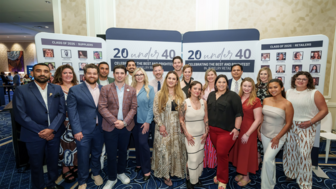
From educational programs, advocacy, and recent MJSA affiliation, Jewelers of America drives progress that elevates businesses of all sizes.

The National Retail Federation is bullish on the holidays, forecasting retail sales to exceed $1 trillion this year.

Late collector Eddy Elzas assembled “The Rainbow Collection,” which is offered as a single lot and estimated to fetch up to $3 million.

At the 2025 World Series, the Los Angeles Dodgers’ Yoshinobu Yamamoto sported a custom necklace made by California retailer Happy Jewelers.

The brand’s seventh location combines Foundrae’s symbolic vocabulary with motifs from Florida’s natural surroundings.

The retailer also shared an update on the impact of tariffs on watch customers.
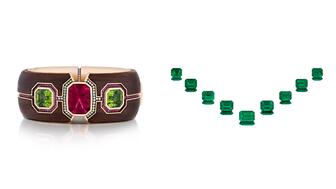
Pink and purple stones were popular in the AGTA’s design competition this year, as were cameos and ocean themes.

All proceeds from the G. St x Jewel Boxing raffle will go to City Harvest, which works to end hunger in New York City.

Courtney Cornell is part of the third generation to lead the Rochester, New York-based jeweler.

De Beers also announced more changes in its upper ranks ahead of parent company Anglo American’s pending sale of the company.

Former Signet CEO Mark Light will remain president of Shinola until a replacement for Ulrich Wohn is found.

Kindred Lubeck of Artifex has three rings she designed with Anup Jogani in Sotheby’s upcoming Gem Drop sale.

The company focused on marketing in the third quarter and introduced two new charm collections, “Pandora Talisman” and “Pandora Minis.”
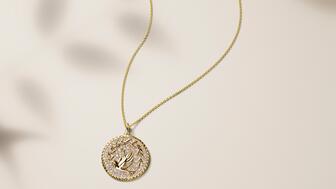
The jewelry retailer raised its full-year guidance, with CFO Jeff Kuo describing the company as “very well positioned” for the holidays.

Ahead of the hearing, two industry organizations co-signed an amicus brief urging the court to declare Trump’s tariffs unlawful.
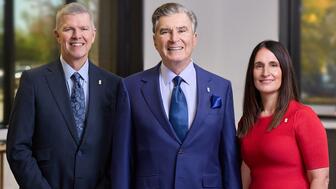
Stuller COO Belit Myers will take on the additional role of president, with all changes effective at the start of 2026.

Smith cautions retailers against expending too much energy on things they can’t control, like the rising price of gold.
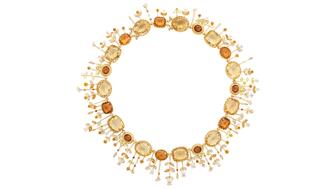
Citrine and topaz are birthstones fit for fall as the leaves change color and the holiday season approaches.

The family-owned jeweler will open its fourth store in Florida in late 2027.

The NYPD is looking for three men who stole a safe and jewelry valued at $3.2 million from the home of a jeweler in Jamaica Hills, Queens.

























